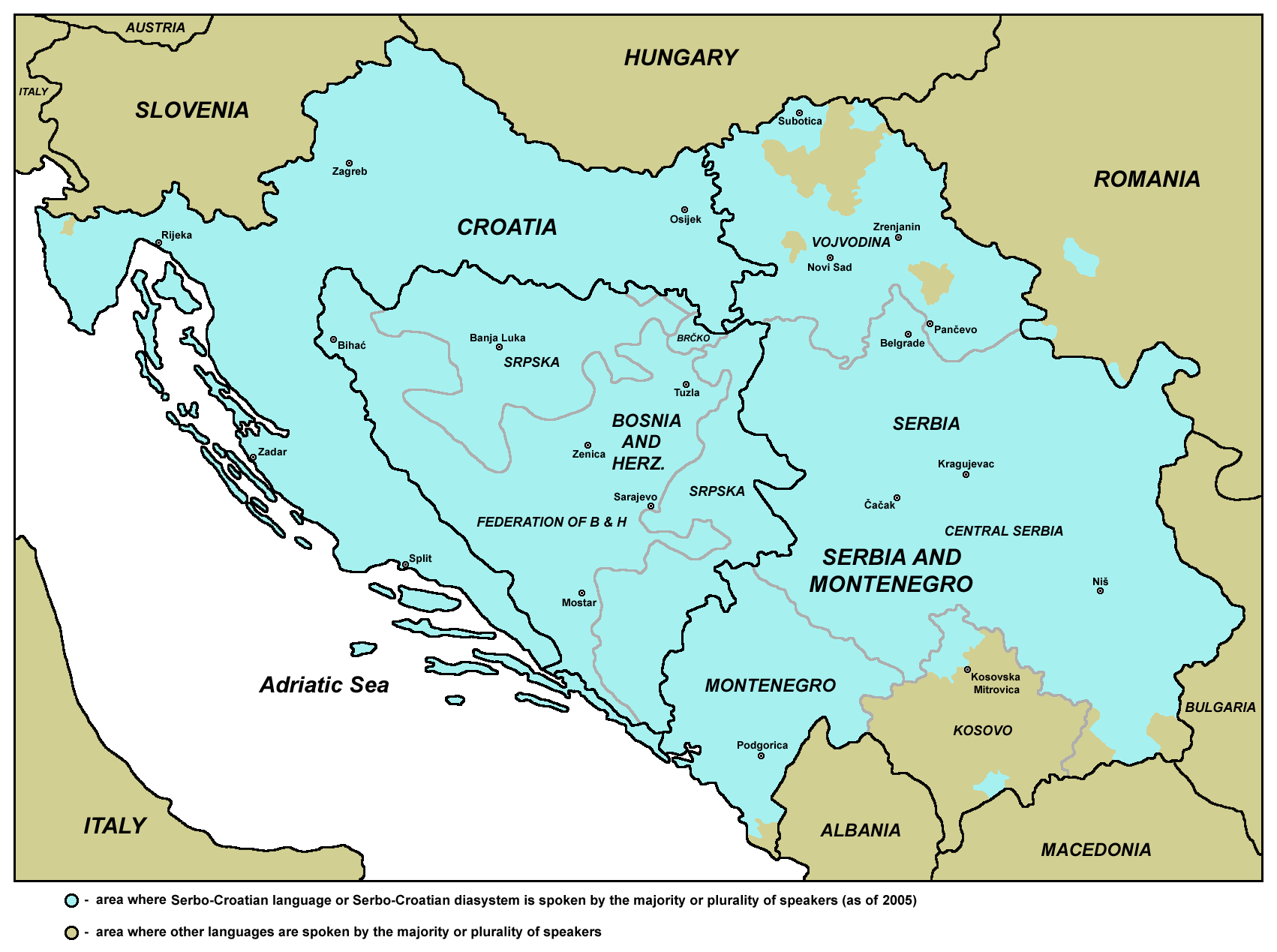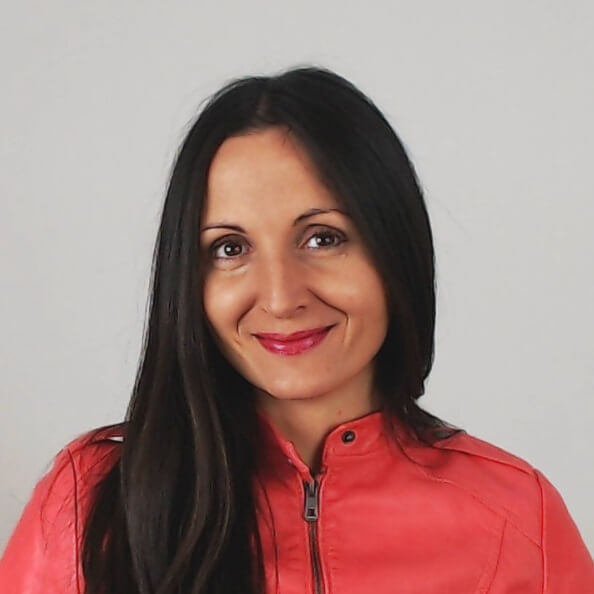Serbian Croatian Bosnian Montenegrin:
My Intimate Experience with the Languages of ex Yugoslavia
Are Serbian Croatian Bosnian and Montenegrin the same language? What about Macedonian and Slovenian? How different or similar are they?
What’s the difference between Slovenian, Croatian, Bosnian, Serbian, Montenegrin and Macedonian? How different or similar are they?
Can the people understand each other speaking these languages?
I was born in a country named Yugoslavia
It was a big and diverse country that included 6 republics: Slovenia, Croatia, Bosnia Herzegovina, Serbia, Montenegro and Macedonia; and two autonomous provinces: Vojvodina and Kosovo. The official language of the country was called Serbo-Croatian, or srpskohrvatski.
That was my favorite subject at school. Some classes included Slovenian and Macedonian songs and poems. I remember, we learned them as funny rhymes, never really understanding the languages completely – only a few words here and there.
In the nineties, Yugoslavia fell apart
The republics were cut off one by one, until each became an independent country. The last one to go was Montenegro, in 2004. The languages of ex Yugoslavia also fell apart.
The Serbo-Croatian language also fell apart to Serbian Croatian Bosnian and eventually Montenegrin. We never questioned that Slovenian and Macedonian were different languages.
When thousands of refugees fled Croatia or Bosnia and came to Serbia, they didn’t change the way they spoke.
At the university, I chose to study my favorite subject
The study group I enrolled in was called „Serbian literature and language“, but I had diverse interesting subjects, like the literature of old Dubrovnik, the Croatian literature and the Macedonian literature – all of which I had to read in original, no translation provided.
I remember that I read Croatian books with pleasure and no obstacles, occasionally finding a word or two per book that I didn’t know.
But the old Dubrovnik literature! That was one of the hardest exams I had. I read old poems and novels in a dialect nobody even speaks today.
Macedonian was less challenging for me. My father’s parents were from South Serbia, and I’d learned some Torlak from them – so I could understand a lot.
(Torlakian or Torlak dialect is a mini-dispute in itself and it illustrates the mentality of the region: it is considered a Macedonian dialect by Macedonian linguists, a Bulgarian dialect by Bulgarian linguists and a Serbian dialect by Serbian linguists.)
I studied in Novi Sad together with people from Serbia, Bosnia and Montenegro. I lived together with them for 3 years in a student dormitory. We all spoke our dialects and never needed a translator.
When my country went out of the „dark nineties“…
I started traveling abroad and meeting new people.
In Italy, I met a girl from Split, Croatia. She was an Italian teacher, a linguist. And she insisted that her language was different from mine. Even though we could argue each one of us speaking her own language.
When I met a group of young people from Zagreb, I loved their way of speaking! I couldn’t resist imitating their accent. The words I heard from them kept slipping off my tongue unconsciously.
I met people from Macedonia, and they tried hard to make their language closer to mine so that we could understand each other easily. My Macedonian was far worse then their Serbian. My friends from Skopje explained that they had learned Serbo-Croatian at school, but actually contact with people helped them because they had a horrible teacher.
I worked for a Slovenian company and had to translate a few phrases occasionally from Slovenian to Serbian – that was a challenge.
Once I drank wine with a Croat and a Slovenian in Athens. The Slovenian did his best to speak Serbo-Croatian and we had a fun chat and a good laugh.
YugoslavianLanguages: just like an old joke
A Serb, a Croat, a Bosnian, a Montenegrin, a Macedonian and a Slovenian go to a bar. They all order a beer and start fighting ferociously if šljivovica and ajvar are Serbian Croatian Bosnian Montenegrin Macedonian or Slovenian invention.
No interpreters. Because the Macedonian and the Slovenian have learned some Serbo-Croatian and can make themselves clear and take part even in bar fights in the languages of ex Yugoslavia.
Are Serbian Croatian Bosnian and Montenegrin the same language?
There is a word that describes the relation between Serbian Croatian Bosnian and Montenegrin languages perfectly: naški. It’s coined from the possessive pronoun naš (ours) and the suffix -ski that we use for making adverbs and that you’ve seen in the names of languages: srpski, hrvatski, engleski, norveški.
The truth is that the term is used mainly by the people living in diaspora, where the mentioned nations stick together and feel the need to diminish differences among them. That’s why they make a big difference between the person who speaks “our language” (naš jezik – naški) and the person who speaks, say, Czech (češki). A person who speaks “naški” is a person you can speak your own language with.
So, are these four languages of ex Yugoslavia different?
The truth is that all four countries have based their standards on the same dialect, Shtokavian, and even the same sub-dialect: Eastern-Herzegovinian. The Serbian standard includes another sub-dialect: Shumadian-Voivodinian. Serbian Croatian Bosnian and Montenegrin are considered languages only because the land is divided between these nations and the language is one of the means used for creating national identity.

Image source: Wikipedia
The differences between the standard Serbian Croatian Bosnian and Montenegrin languages are minimal.
Just like between Spanish from Mexico, Cuba and Argentina.
Or English from England, Australia and the States.
So if you learn any of the four standard languages, you will be able to communicate across the area.
The vast majority of the words are the same or very similar, the conjugations and the declensions are the same.
However, there are dialects that you won’t understand. They have different grammar. Because languages spill across the borders. Like Kajkavian that goes from Zagreb to Slovenia, or Torlak that goes from South Serbia to Macedonia and Bulgaria.
This phenomenon is the natural way the languages work. There’s nothing special about it in this area. You can see it everywhere in the world. It’s called the dialect continuum or dialect chain. As people mix and mingle, so do dialects and languages. Establishing a standard only makes our lives, as foreign language learners, easier.
by Magdalena Petrovic Jelic
Founder of Serbonika
Serbian language teacher and entrepreneur, language lover and polyglot, but also a mother and a relentless storyteller.
On a mission to create the best web space for learning Serbian: Serbonika.

Serbonika
Najbolja metoda za učenje srpskog jezika
The best method to learn Serbian
How to Find an Excellent Serbian Language Teacher
How to find a good Serbian language teacher? Not an easy task. When choosing your Serbian teacher, pay attention to the traits that will help you recognize a true talent
Feet Speech: 8 Serbian Leg Idioms for English and Norweigian Speakers
Did you know that many Serbian leg idioms are actually the same in English and Norwegian? That was a surprise for me too!
False Friends in Serbian for Polish Speakers
Some English speakers make jokes about polishing their Polish, but in this article you will learn 16 false friends in Serbian for Polish speakers.
Corona Virus in Serbia Fought by Distance Learning
First cases of Corona virus in Serbia, isolation measures and the 1st experiment with distance learning in public schools – a Brilliant Solution for Quarantine





